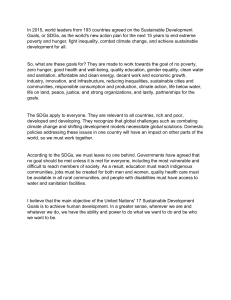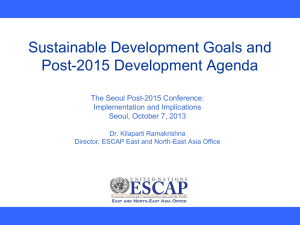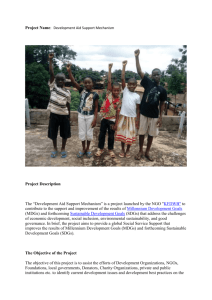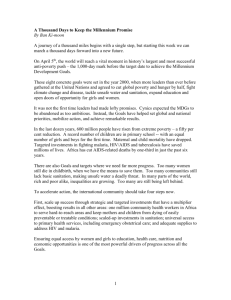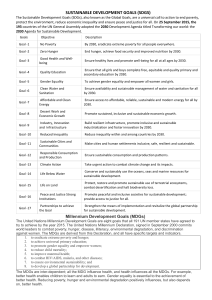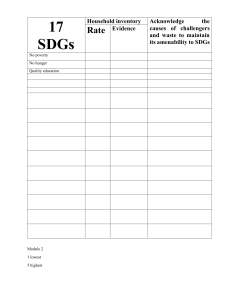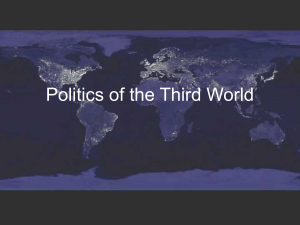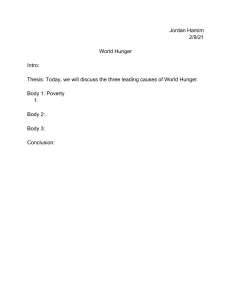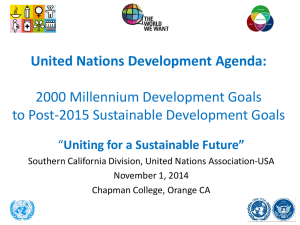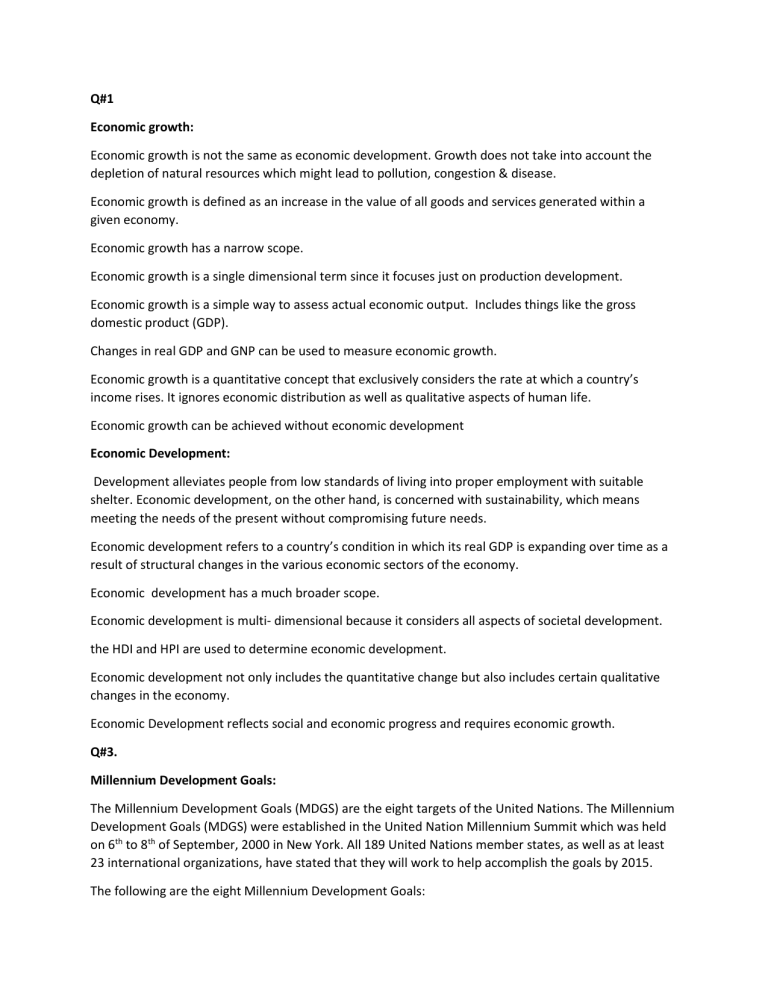
Q#1 Economic growth: Economic growth is not the same as economic development. Growth does not take into account the depletion of natural resources which might lead to pollution, congestion & disease. Economic growth is defined as an increase in the value of all goods and services generated within a given economy. Economic growth has a narrow scope. Economic growth is a single dimensional term since it focuses just on production development. Economic growth is a simple way to assess actual economic output. Includes things like the gross domestic product (GDP). Changes in real GDP and GNP can be used to measure economic growth. Economic growth is a quantitative concept that exclusively considers the rate at which a country’s income rises. It ignores economic distribution as well as qualitative aspects of human life. Economic growth can be achieved without economic development Economic Development: Development alleviates people from low standards of living into proper employment with suitable shelter. Economic development, on the other hand, is concerned with sustainability, which means meeting the needs of the present without compromising future needs. Economic development refers to a country’s condition in which its real GDP is expanding over time as a result of structural changes in the various economic sectors of the economy. Economic development has a much broader scope. Economic development is multi- dimensional because it considers all aspects of societal development. the HDI and HPI are used to determine economic development. Economic development not only includes the quantitative change but also includes certain qualitative changes in the economy. Economic Development reflects social and economic progress and requires economic growth. Q#3. Millennium Development Goals: The Millennium Development Goals (MDGS) are the eight targets of the United Nations. The Millennium Development Goals (MDGS) were established in the United Nation Millennium Summit which was held on 6th to 8th of September, 2000 in New York. All 189 United Nations member states, as well as at least 23 international organizations, have stated that they will work to help accomplish the goals by 2015. The following are the eight Millennium Development Goals: 1. 2. 3. 4. 5. 6. 7. 8. To eradicate extreme poverty and hunger To achieve universal primary education To promote gender equality To reduce child mortality To improve maternal health To combat HIV/AIDS, malaria, and other diseases To ensure environmental sustainability To develop a global partnership for development Each goal included precise targets and deadlines to meet those targets. In June 2005, the G8 finance ministers decided to allocate enough funds to the World Bank, the International Monetary Fund (IMF), and the African Development Bank (AFDB) to eliminate $40 to $55 billion in debt due by poor nations, in order to help progress. This would allow them to employ resources to improve health, education, and poverty alleviation. During this time, developed-country aid to the MDGS increased. More over half sought debt relief. The majority of the remaining funds were diverted to natural disaster assistance and military aid rather than development. The UN promised to hold similar summits every five years to monitor progress toward attaining the MDGs, and the execution of these eight Millennium Declaration goals was set to begin on January 1, 2001. In 2005, during the World Summit, the first follow-up to the Millennium Summit was held. The United Nations has prioritized the execution of these MDGs since 2001, and while most of the targets were not met by 2015, substantial progress has been made over the last 15 years. The MDG Report 2015 stated that the 15-year endeavor to accomplish the eight aspirational goals outlined in the Millennium Declaration in 2000 was mainly successful around the world, despite some gaps. The statistics and analyses presented in the report illustrate that even the poorest people may make progress with targeted interventions, effective tactics, enough resources, and political will. The last MDG report indicates that setting goals may raise millions out of poverty, empower women and girls, enhance health and well-being, and open up huge new prospects for better lives. Sustainable development Goals: The Sustainable Development Goals (SDGs) also known as Global Goals were established on September 25, 2015, by 193 Heads of State at the United Nations General Assembly. SDGs are part of UN Resolution 70/1, the 2030 AGENDA. The SDGS were developed to succeed the Millennium Development Goals (MDGS) which ended in 2015. The SDGS run from 2015 to 2030. There are 17 goals in total, with 169 specific targets for each of them. All member states are expected to meet the goals by 2030. They are a universal call to action to end poverty, protect the planet and ensure that all people live in peace and prosperity. The 17 SDGs are coordinated; they observe that actions taken in one area have an impact on outcomes in other areas, and that development must strike a balance between social, economic, and environmental sustainability. Countries have agreed to emphasize improvement for those who are the most disadvantaged. The SDGs aim to eliminate poverty, hunger, AIDS, and gender discrimination against women and girls. To achieve the SDGs in whatever context, all of society’s creativity, know-how, technology, and financial resources are required. The Sustainable Development Goals serve as a road map for achieving a better and more sustainable future for everybody. They highlight global issues such as poverty, inequality, climate change, environmental degradation, peace, and justice. Sustainable Development Goals include: In August of 2015 193 countries agreed to the following 17 goals: 1. 2. 3. 4. 5. No poverty Zero hunger Good health and wellbeing Quality education Gender equality Clean water and sanitation Affordable and clean energy Decent work and economic growth Industry, innovation and infrastructure Reduce inequality Sustainable cities and communities Responsible consumption and production Climate action Life below water Life on land Peace and justice. Strong institutions Partnerships for the goals. 1. No Poverty – End poverty in all its forms everywhere Zero Hunger – End hunger, achieve food security and improved nutrition and promote sustainable agriculture Good Health and Well-being – Ensure healthy lives and promote well-being for all at all ages Quality Education – Ensure inclusive and equitable quality education and promote lifelong learning opportunities for all Gender Equality – Achieve gender equality and empower all women and girls Clean Water and Sanitation – Ensure availability and sustainable management of water and sanitation for all Affordable and Clean Energy – Ensure access to affordable, reliable, sustainable and clean energy for all Decent Work and Economic Growth – Promote sustained, inclusive and sustainable economic growth, full and productive employment and decent work for all Industry, Innovation and Infrastructure – Build resilient infrastructure, promote inclusive and sustainable industrialization and foster innovation Reduced Inequalities – Reduce inequality within and among countries Sustainable Cities and Communities – Make cities and human settlements inclusive, safe, resilient and sustainable Responsible Consumption and Production – Ensure sustainable consumption and production patterns. Climate Action – Take urgent action to combat climate change and its impacts Life Below Water – Conserve and sustainably use the oceans, seas and marine resources for sustainable development targets Life on Land – Protect, restore and promote sustainable use of terrestrial ecosystems, sustainably manage forests, combat desertification, and halt and reverse land degradation and halt biodiversity loss targets Peace, Justice and Strong Institutions – Promote peaceful and inclusive societies for sustainable development, provide access to justice for all and build effective, accountable and inclusive institutions at all levels targets Partnerships for the Goals – Strengthen the means of implementation and revitalize the global partnership for sustainable development targets
